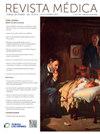Neoplasias endocrinas múltiples: de lo molecular a lo clínico
IF 0.4
Q4 MEDICINE, GENERAL & INTERNAL
引用次数: 0
Abstract
Multiple Endocrine Neoplasia (MEN) types 1, 2 (subdivided into 2A and 2B), 4, and 5 are hereditary genetic syndromes with an autosomal dominant inheritance pattern. They are characterized by the development of multiple endocrine tumors, both benign and malignant, affecting various glands, with clinical manifestations that vary depending on the MEN subtype.
MEN type 1 (MEN1) is associated with inactivating mutations in the MEN1 gene and is mainly manifested by parathyroid, pituitary, and gastroenteropancreatic tumors. Molecular analysis of the MEN1 gene is indicated in patients with clinical suspicion and their relatives, although the genotype–phenotype correlation remains limited.
MEN type 2 (MEN2) results from activating mutations in the proto-oncogene RET and is characterized by medullary thyroid carcinoma (MTC), which is highly penetrant, aggressive, and common to all MEN2 subtypes. MEN2A is also associated with pheochromocytoma and hyperparathyroidism, whereas MEN2B includes pheochromocytoma and mucosal neuromas. Prophylactic thyroidectomy is recommended in childhood for carriers of RET mutations, according to the risk stratification defined by the American Thyroid Association. Moreover, apparently sporadic cases of MTC may represent undiagnosed MEN2, supporting the systematic analysis of the RET proto-oncogene.
MEN type 4 (MEN4), associated with mutations in the CDKN1B gene, presents a phenotype similar to MEN1 but with lower severity and later onset.
MEN type 5 (MEN5), linked to mutations in the MAX gene, is mainly associated with hereditary pheochromocytomas and paragangliomas.
Early diagnosis and targeted genetic testing enable the implementation of surveillance and personalized management strategies, thereby reducing morbidity and mortality.
The aim of this article is to review the genetic, clinical, and diagnostic features of the main multiple endocrine neoplasia (MEN) syndromes, with emphasis on their classification, specific manifestations, the role of molecular testing, and early management strategies aimed at reducing associated morbidity and mortality
多发性内分泌肿瘤:从分子到临床
多发性内分泌瘤(MEN)类型1、2(细分为2A和2B)、4和5是常染色体显性遗传模式的遗传性遗传综合征。其特点是发展为多发性内分泌肿瘤,良恶性均可,影响各种腺体,临床表现因MEN亚型而异。MEN1型(MEN1)与MEN1基因失活突变相关,主要表现为甲状旁腺、垂体和胃肠胰腺肿瘤。尽管基因型-表型相关性仍然有限,但在临床怀疑的患者及其亲属中需要进行MEN1基因的分子分析。MEN2型(MEN2)是由原癌基因RET的激活突变引起的,其特征是甲状腺髓样癌(MTC),其高度渗透,侵袭性,并且在所有MEN2亚型中都很常见。MEN2A也与嗜铬细胞瘤和甲状旁腺功能亢进有关,而MEN2B包括嗜铬细胞瘤和粘膜神经瘤。根据美国甲状腺协会定义的风险分层,建议对RET突变携带者在儿童时期进行预防性甲状腺切除术。此外,明显散发的MTC病例可能代表未诊断的MEN2,支持RET原癌基因的系统分析。与CDKN1B基因突变相关的MEN4型(MEN4)表现出与MEN1相似的表型,但严重程度较低且发病较晚。MEN5型(MEN5)与MAX基因突变有关,主要与遗传性嗜铬细胞瘤和副神经节瘤相关。早期诊断和有针对性的基因检测有助于实施监测和个性化管理战略,从而降低发病率和死亡率。本文旨在综述主要多发性内分泌瘤(MEN)综合征的遗传、临床和诊断特点,重点介绍其分类、具体表现、分子检测的作用以及旨在降低相关发病率和死亡率的早期治疗策略
本文章由计算机程序翻译,如有差异,请以英文原文为准。
求助全文
约1分钟内获得全文
求助全文
来源期刊

Revista Medica Clinica Las Condes
MEDICINE, GENERAL & INTERNAL-
CiteScore
0.80
自引率
0.00%
发文量
65
审稿时长
81 days
 求助内容:
求助内容: 应助结果提醒方式:
应助结果提醒方式:


